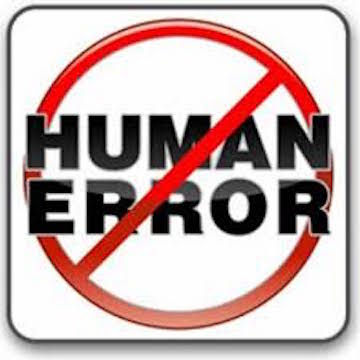Where Did the Human Factors Knowledge Embedded in the TapRooT® System Come From?

The Start – The University of Illinois

It started when Mark Paradies (now President of System Improvements) was stationed at the University of Illinois as an Assistant Professor of Naval Science (NROTC Instructor) in the US Navy. Mark was required to register for a graduate degree program and chose to study Nuclear Engineering and Human Factors.
Mark’s advisors were Dr. Barclay Jones (Nuclear Engineering Department) and Dr. Chuck Hopkins (Psychology Department). Mark had been in the Nuclear Navy and was familiar with high-reliability organizations and the errors that people make (even when they are well-trained & have good procedures).

Dr. Jones started a joint program with the Psychology Department to do research on human factors and nuclear power. Mark was the first graduate student to do research as part of that program. The knowledge Mark learned in the program became a part of the basis for the human performance section of the TapRooT® System.

Dr. Hopkins’s links to TapRooT® Root Cause Analysis started by being the academic advisor, mentor, and friend to Mark Paradies while Mark studied Human Factors at the University of Illinois. It was during these studies that Mark learned the human factors concepts that form the basis of the Root Cause Tree® Diagram. Dr. Hopkins also helped edit the Human Factors Troubleshooting Guide (15 questions) on the front of the Root Cause Tree® Diagram and provided comments and ideas that helped form the Basic Cause Categories on the back side of the tree. Dr. Hopkins also helped develop and teach the first 5-day course provided by System Improvements and provided reviews and comments on every edition of the Root Cause Tree® Diagram, the Root Cause Tree® Dictionary, and the TapRooT® Manual and TapRooT® Book. Dr. Hopkins also presented human factors topics at the first two TapRooT® Summits.
Developing the TapRooT® Root Cause Analysis System
The first “commercial” version of new root cause analysis tools required careful design to include advanced human performance technology without the jargon used by experts. Mark Paradies and co-developer Linda Unger crafted a system that was not overly complex.

What advanced human factors concepts are in the TapRooT® System? The complete list is too long for this article, but it includes:
- The SOR Model of Human Performance
- Rasmussen’s Skill-Rule-Knowledge Model
- Knowledge of Advanced Job Performance Aids
- The Systematic Approach to Training (SAT)
- Application of Cockpit Resource Management
- Ergonomics (anthropometrics)
- Communication reliability practices
- An advanced behavior change model
- Charles Hopkins’ human factors theories
- Chris Wickens’ concepts on mental models
- James Reason’s Swiss Cheese Model of error
- Paradies/Unger’s human performance troubleshooting model
Here’s a sample of the human factors sources used to develop the just Procedures Basic Cause Category.

In addition to Dr. Jones and Dr. Hopkins, other safety, performance improvement, and human performance experts contributed to developing the TapRooT® System through reviews, suggestions, and research. Here are a few of the contributors:
- Dr. Paul Haas (human factors expert)
- Jerry Lederer (the father of aviation safety)
- Larry Minnick (nuclear plant safety expert)
- Heinz Block (equipment reliability guru)
- Dr. Jens Rasmussen (system reliability and human factors expert)
- Dr. Christopher Wickens (cognitive psychology and human factors expert)
- Dr. Alan Swain (human reliability expert)
- Smoke Price (human factors and function allocation expert)
This distinguished group of experts and many others contributed in one way or another to the intelligent design and improvement of the TapRooT® Root Cause Analysis System.
40 Years of Continuous Improvement
The first version of the TapRooT® System wasn’t the last. Staff suggestions, students’ course evaluations, TapRooT® Users’ experience, and contributions by the TapRooT® Advisory Board all helped the TapRooT® System become more effective and easier to use and included the latest effective improvements in human performance best practices.
The major TapRooT® Courses are updated every year.

What about the system documentation – the TapRooT® Books?

The TapRooT® Books were improved several times in the 1990s (it was called the TapRooT® Incident Investigation System Manual back then), again in 2000 (the green book), again in 2008 (the black book), and again in 2015 through 2021 (the ten book set).

All of these revisions included improvements in the ability of the TapRooT® System to analyze human performance issues.
One of the 10-book sets was about improving human performance: Stopping Human Error.

This book led to the development of the Stopping Human Error Course (see upcoming public course dates HERE) that teaches how to use various human performance improvement best practices (including TapRooT® Root Cause Analysis) to stop (or reduce) human errors.
Learn More About Improving Human Performance
Here are my two suggestions for learning more about improving human performance…
Advanced Root Cause Analysis Training
Take the 5-Day TapRooT® Advanced Root Cause Analysis Team Leader Training.

See the course outline HERE.
See the upcoming public course dates and locations HERE.
Stopping Human Error Course
This is the course for you if you are interested in how the TapRooT® System can improve human performance and other best practices for preventing human errors.

See the course outline HERE.
See the upcoming public course dates and locations HERE.
Don’t Wait!
Both the 5-Day and the Stopping Human Error Courses have limited seats available. Register now by using the links above to guarantee the course of your choice.



